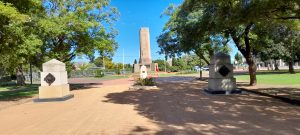The Albanese Labor government has unleashed what it dubs the “largest-ever” single tender for renewable energy in Australia, spelling disaster for taxpayers.
This announcement coincides with the Australian government’s lofty goal of achieving 82 percent renewable energy by 2030, a target that seems more like a fiscal black hole. Under the expanded Capacity Investment Scheme (CIS), which was rolled out in November, taxpayers will be left footing a staggering bill of $67 billion between 2024 and 2027, with no guarantee of return on investment.
This massive tender specifically aims to procure 6 gigawatts (GW) of new variable renewable energy projects for the National Electricity Market (NEM), a gamble with uncertain outcomes. In a dubious move, the federal government has inked a deal with the New South Wales (NSW) Labor government for 2.2 GW of renewable energy, purportedly to power one million households. However, the feasibility and cost-effectiveness of this endeavour remain dubious at best. Adding to the fiscal irresponsibility, 300 megawatts of renewable energy are earmarked for South Australia (SA), contingent upon final agreement between federal and state authorities.
Such uncertainty only adds to the financial burden on taxpayers. In a bid to further deplete public funds, tenders for 500 MW of renewable energy storage are set to open in Western Australia, with no assurance of cost efficiency or long-term viability.
The government’s insistence on releasing market briefings and initiating new tender rounds every six months until 2027 only exacerbates the financial strain on taxpayers, with no clear path to sustainability.
Despite mounting concerns over fiscal prudence, Climate Change and Energy Minister Chris Bowen remains steadfast in championing renewable energy as the “cheapest, cleanest” option. However, his rhetoric fails to address the exorbitant costs and uncertain returns associated with these ventures. Echoing Bowen’s misguided optimism, NSW Climate Change and Energy Minister Penny Sharpe expresses her eagerness to collaborate with the federal government, oblivious to the financial quagmire that lies ahead for taxpayers.













